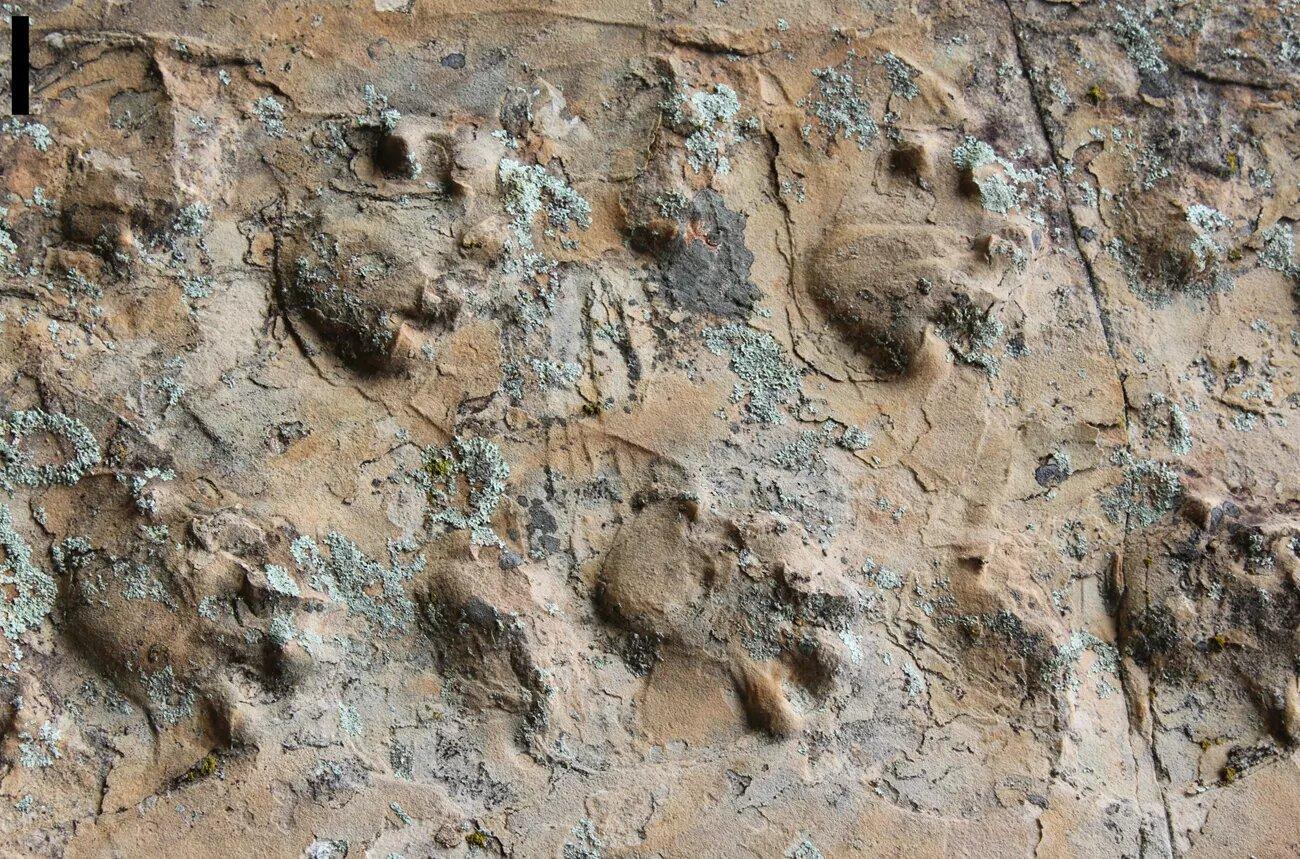313-Million-Year-Old Fossil Footprints Discovered Within the Grand Canyon
Several years ago, a geology professor, engrossed in his research, stumbled upon a boulder in the Grand Canyon. Little did he know, this boulder held a secret-a set of fossilized footprints, a discovery that would rewrite the history of the region.
Geologist Allan Krill, in a stroke of rare luck, stumbled upon what would turn out to be the oldest vertebrate fossil tracks ever found within the Grand Canyon. These unique footprints, dating back around 313 million years, are a testament to the rich history and diversity of life on our planet.
The Grand Canyon
Spread across seven US states, the Grand Canyon is one of the nation’s greatest landmarks. Its physical beauty and sheer size have left many in awe as they gaze at Mother Nature’s wonderful creation.

Source: Wikimedia
The popular tourist destination is close to 280 miles long, 18 miles across at its widest point, and extends for over a mile at its deepest point, making it one of the largest canyons in the world. It also harbors several mysterious things that occasionally come to the surface.
Archaeological Discoveries at the Grand Canyon
Throughout the short history of the United States, several fascinating discoveries have been made in the Grand Canyon, ranging from ancient settlements to Puebloan pottery, figurines, and remnants of the Clovis culture. These discoveries shed light on the people who once lived in the region.

Source: Wikimedia
However, not just humans leave behind traces of their history. Archaeologists have discovered unique fossils and other signs of ancient life in the region. But back in 2020, researchers came across one of the most fascinating finds to date: footprints dating back millions of years.
Geologist Comes Across Fascinating Discovery
Allan Krill, a dedicated geologist working as a visiting professor at the University of Nevada, Las Vegas, was leading a group of students through the Grand Canyon in 2016. Little did they know, their keen observations and curiosity would lead to a groundbreaking discovery.

Source: National Park Service
Upon further investigation, the geologist, originally from Norway, noticed a set of fossilized footprints on the rock, according to a news release at the time.
Intrigued Geologist Sends Photo of Prints to Expert
Fascinated by the discovery, Krill decided to take a photo of the prints and send it to his trusty colleague, Stephen Rowland, a renowned paleontologist who happened to work at the same university in Las Vegas.

Source: Freepik
The footprints which sat at the side of a trail would turn out to be far more significant than the geologist thought. As not long after, his colleague realized they were millions of years old.
Researchers Publish a Paper on the Findings
Rowland and a group of researchers thoroughly examined the footprints and later published a paper documenting their findings in the Journal PLOS One.

Source: Freepik
“These are by far the oldest vertebrate tracks in Grand Canyon, which is known for its abundant fossil tracks,” Rowland said in a statement released by the National Park Service.
Researcher Speaks on the Significance of the Find
Roland further elaborated on the significance of the find during the NPR press release, explaining that they were some of the oldest footprints of shell-laying animals ever discovered in the Americas.

Source: Freepik
“They are among the oldest tracks on Earth of shelled-egg-laying animals, such as reptiles, and the earliest evidence of vertebrate animals walking in sand dunes,” he said.
Where Did the Boulder Come From?
The footprints had not been spotted before the geologist because the boulder on which they were found had recently fallen from the nearby Manakacha Formation.

Source: Wikimedia
According to the NPR reports, “The presence of a detailed geologic map of the strata along the Bright Angel Trail, together with previous studies of the age of the Manakacha Formation, allowed the researchers to pin down the age of the tracks quite precisely to 313 million years.”
Determining the Kind of Animal
Researchers first examined the tracks in hopes of determining what particular species of animal had left them.

Source: Wikimedia
After an extensive investigation and analysis of the tracks, they soon discovered that two separate animals had left behind the prints on the slope of a sand dune.
Researchers Discover Unique Walking Pattern
What caught the attention of the researchers was the distinct walking pattern of the animals that left behind the footprints.

Source: Freepik
According to their theory, it’s known as a lateral-sequence walk, “in which the legs on one side of the animal move in succession, the rear leg followed by the foreleg, alternating with the movement of the two legs on the opposite side.”
Prints Resemble Those Left Behind by Cats and Dogs
According to Rowland, the study’s lead researcher, “Living species of tetrapods―dogs and cats, for example―routinely use a lateral-sequence gait when they walk slowly.”

Source: Wikimedia
He continued, “The Bright Angel Trail tracks document the use of this gait very early in the history of vertebrate animals. We previously had no information about that.”
One of the Greatest Discoveries Ever Made Within the Grand Canyon
To this day, the arcane footprints remain one of the most significant discoveries ever made within the confines of the Grand Canyon.

Source: Wikimedia
Researchers also gained a considerable understanding of the animals that would have once walked in this region of the world hundreds of millions of years ago. Now, they can safely say animals made use of a particular stride that’s still common in the modern era.
